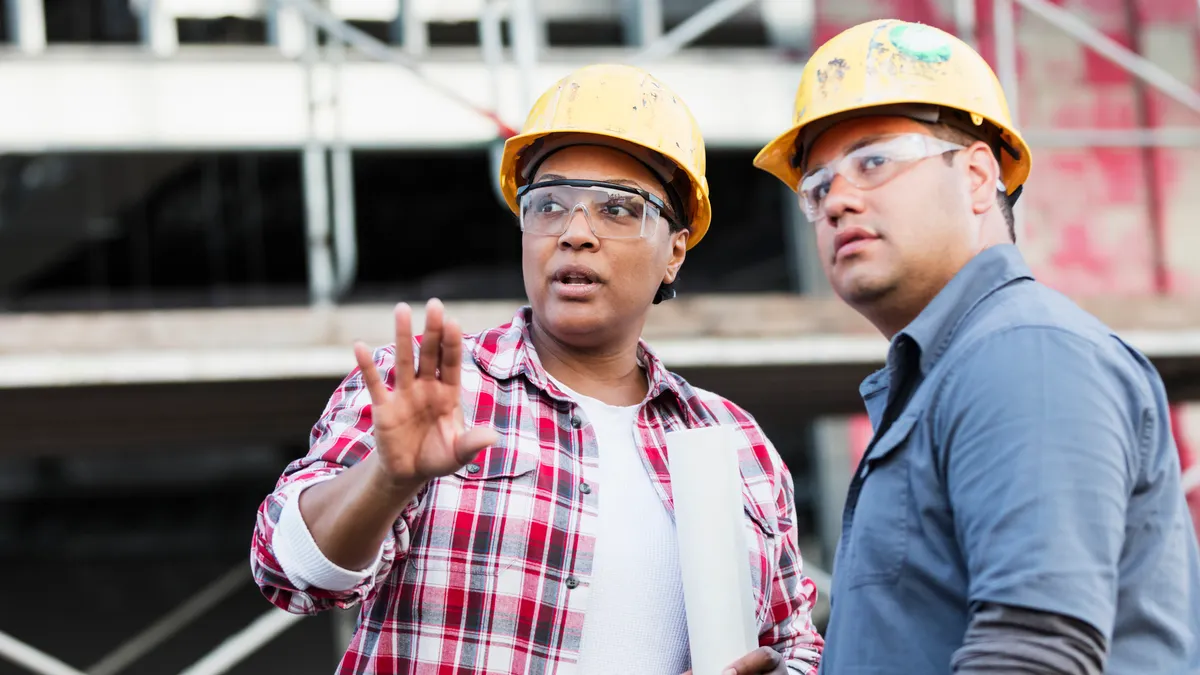More than three years after the start of the COVID-19 pandemic, women are still navigating a changing workplace. Right now, it’s a mixed bag, as Deloitte’s third Women @ Work: A Global Outlook report found. The report surveyed 5,000 working women in 10 countries.
Women reported that some conditions are improving, especially around burnout, but they’re still trying address their mental health in less supportive work environments, are being pushed out of flexible work arrangements, are still expected to shoulder most domestic duties, and experiencing microaggressions, especially women who are LBGTQ+ and/or are not White.
And it’s all still driving women to look for other jobs, or stop working at all. “Why are women leaving? They’re not getting what they want or what they need,” Emma Codd, global inclusion leader at Deloitte, said.
Mental health is still a factor
In Deloitte’s 2022 report, “burnout” was cited a top concern, with 46% percent of respondents reporting they fit that description. “That is no longer the driver for people looking to leave their jobs,” she said. For 2023, 30% of women reported feeling burned out.
While that drop is positive, it’s against a “backdrop of very poor findings in mental health,” Codd added. The report found that 35% of respondents rated their mental well-being as poor/very poor, which is similar to the 2022 number; and around half reported their stress levels as being higher than last year.
Fewer women also reported that they could get adequate mental health support from their employers. In 2022, 43% of women felt comfortable talking about mental health at work. In 2023, that number dropped to 25%. And only 25% feel comfortable taking time off to take care of their mental health, also down from 39% in 2022.
It’s a concerning mismatch. “The place where really there should be levels of support provided, and people should be able to talk about it — you’ve got a worsening picture here. That’s not a good combination,” Codd said.
Women want flexibility, but aren’t getting it
Employers shoving workers back into the office is also pushing women out the door, intentionally or not. Deloitte found “lack of flexibility around when I work” as the second-most cited reason that women chose to leave their jobs in the last 12 months (the first being “pay wasn’t high enough.”)
They also found that 97% of women don’t feel they can ask for flexible work arrangements for fear that it will affect their careers; and 95% believe it’s unlikely that their workload would adjust should they be granted a flexible schedule.
That this number is so high “means a lot of these women are working within cultures based on fear and scarcity, and probably cultures that have an implicit or explicit ‘pregnancy tax,’ i.e. the assumption that because you chose to have children, you're somehow now less committed to working hard,” said Jessica Kriegel, chief scientist of workplace culture at Culture Partners. “If you have the flexibility and support, most new moms will run through a wall for that employer. The gap is still about employers not leaning in and embracing that.”
There’s an “undertone of being expected to go back into the office despite formal messaging” that flexibility is an acceptable option, Codd said. She herself has a hybrid work arrangement and loves it. “But for many people, I think what you’re seeing is an expectation [to go] back. That is not going to work for so many people. Hybrid done well is a massive benefit to work, and to many people, particularly women, it’s very important.”
Women are coping with problems in and out of the office
Women are also facing pressures that aren’t necessarily tied to the office, but affect their careers and work. Despite 88% of respondents saying they work full time, nearly half of respondents have primary responsibility for domestic tasks at home, including parenting, and only about 10% say those duties are mostly the responsibility of their partners.
The Deloitte report also found that 4 in 10 women say they feel the need to prioritize their partners’ career first. That’s the case even for women who are the primary earners: 1 in 5 feel that same pressure to push their partner’s careers ahead over their own.
Gender issues can infuse the workplace as well, with 44% of women reporting they experienced microaggressions, like being interrupted or talked over in meetings, being given fewer opportunities to speak up compared to male colleagues, or having someone else take credit for an idea. While that number is down from 2022, the situation remains harsh for LGBTQ+ women, with 76% reporting a microaggression in the last 12 months, and for women in ethnic minority groups, with 53% saying they experienced microaggressions and/or harassment.
All of these pressures can add to burnout, Codd said, pushing women to look for another job, switch to part-time work or leave the workforce all together.
There’s a feeling that “the pandemic’s over, so we don’t have to talk about mental health anymore. You do,” Codd said. “This data shows that women are suffering significantly more stress and anxiety. This is a bigger issue.”



















